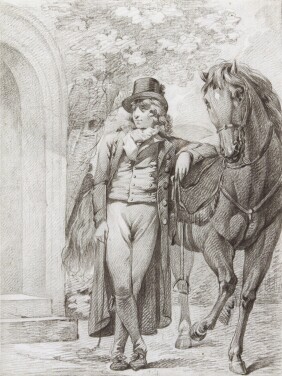A t the heart of this fascinating sale of works on paper from four centuries of European art are intriguing groups of works from three very different collections.
The first is a rare collection of Spanish drawings, assembled over some 40 years, and including works of real quality by artists whose names are not necessarily well known to a wider international audience.
The second was formed from the 1960s to the early 2000s, by the eminent London dealers in British drawings and watercolours, Cyril and Shirley Fry, whose taste and interests helped shape a whole generation of British collectors in the field.
The third collection featured here is also British, but formed much earlier in the 20th Century by the 2nd Baron Fairhaven; this group consists of superb natural history watercolours from the 18th and early 19th century.
In addition, there are many appealing and affordable drawings from the Italian, French and Dutch schools, dating from the early 16th to the late 19th century; indeed a sale with something to delight and intrigue all manner of collectors.
Auction Highlights
We are delighted to present for sale works from the private collection of the late Cyril and Shirley Fry. Huon Mallalieu, art historian, writer and friend of the Frys’ for many years, sheds light on their world; the successful running of the Fry Gallery in the heart of St James, their aims as collectors and their overriding passion for drawings and watercolours.
Featured Artworks from the Collection

Featured Artist's Lots

Featured Artworks from the Collection
Drawings from the Collection of Carlos Alberto Cruz
As a collector, Chilean architect Carlos Alberto Cruz, founder of The Apelles Collection, has wide-ranging interests that include Colonial Silver, Twentieth-Century Photography, incunabula and manuscripts, medieval liturgical objects, and contemporary Latin American art.
When, in the early 1990s, his attention was captured by Golden Age Spain in all its cultural aspects, he was one of a tiny minority of collectors looking at Spanish drawings. His activity played an important role in the increasing prominence of the Spanish Golden Age, and coincided with a growing number of international exhibitions to which he lent generously. This was a new Golden Age, one of scholarly and museological interest - outside and inside of Iberia - in the visual arts of Spain. With greater subtlety and depth than ever before, Golden Age Spanish Art occupies an increasingly prominent place in the panorama of art history and collecting.
Mr Cruz recognised that in an Italo-centric art historical discourse, Spanish visual arts were somehow “other” and it was their distinctive qualities - sometimes emphatic, sometimes restrained - that merited his special interest. It is an historical fact that many surviving Spanish drawings reveal a past in which they were studied in painters' workshops, not the cabinets of connoisseurs.
Very often, drawings first belonged to and were passed between collections of practising artists, and they existed in the context of the working studio, where they might play a significant part in the creative process. The connoisseurship and enjoyment of drawings has been likened to the musical taste that prefers chamber music to symphonies. In this sense, appreciation of the delicate intimacy, varied purposes and aesthetic life of Spanish drawings has marked the Cruz collection as one of singular taste and discernment.
Read Less
One senses that in recent times collectors have rather neglected William Henry Hunt, the technically brilliant 19th century painter who achieved so much success within his lifetime. Ahead of the upcoming Old Master & British Works on Paper sale, Mark Griffith-Jones, Sotheby’s British Watercolours and Drawings Department’s Director and Specialist, asks if it not time for a correction in the market.










































